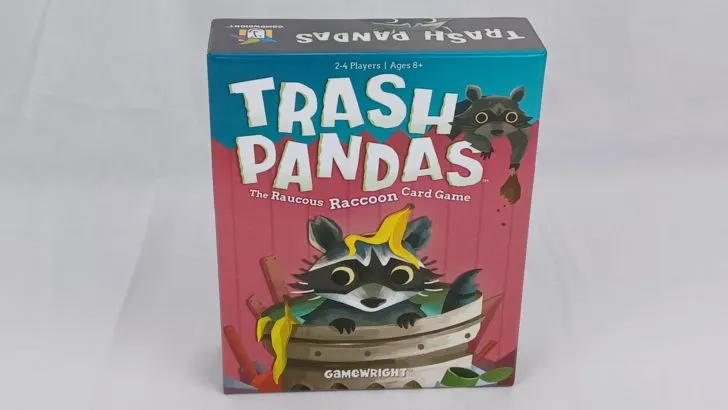Objective of Trash Pandas
The objective of Trash Pandas is to acquire and stash cards in order to score more points than the other players at the end of the game.
Setup for Trash Pandas
- Place the Token Actions card on the table where everyone can see it.
- The player who last took out the trash will be the first player in the game.
- Shuffle the cards and deal them out to the players. The cards will be dealt out to the players based on turn order. Players can look at their cards, but shouldn’t show them to the other players.
- Player 1 = 3 cards
- Player 2 = 4 cards
- Player 3 = 5 cards
- Player 4 = 6 cards
- Place the remaining cards face down on the table. This pile is referred to as the “trash can”.
- Place the six tokens and the die in the middle of the play area.
Playing Trash Pandas
Starting with the first player and proceeding left (clockwise), the players will take turns. The actions you will take on your turn are as follows:
- Roll the Die
- Resolve Tokens
Roll the Die
To begin your turn you will roll the die. You will take the token from the center of the table that matches the symbol that you rolled.
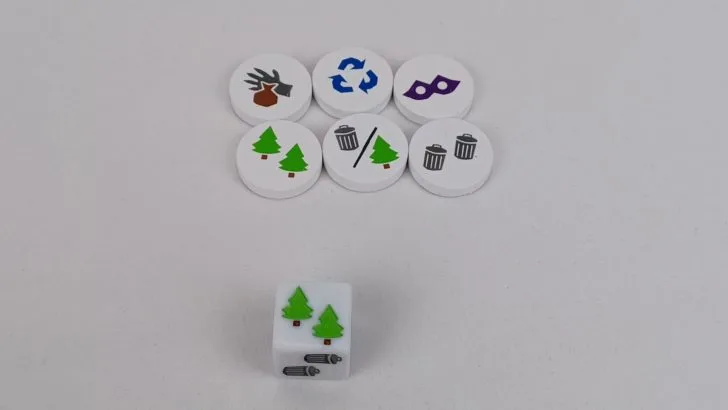
Next you will decide whether to keep rolling the die, or stop. If you choose to stop rolling the die, move onto the Resolve Tokens section.
If you choose to roll the die again, roll it. Then find the token matching the symbol that you rolled. Add this token to the one you collected from your first roll.
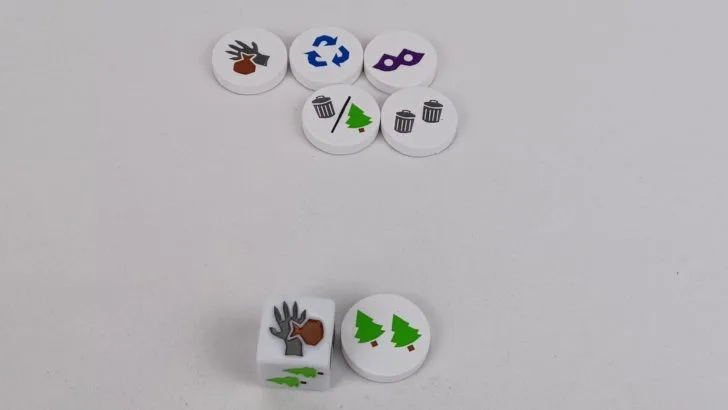
After each time you roll the die and take the corresponding token, you will have the option to roll the die again or stop. This will continue until you bust, stop, or you collect all six tokens.
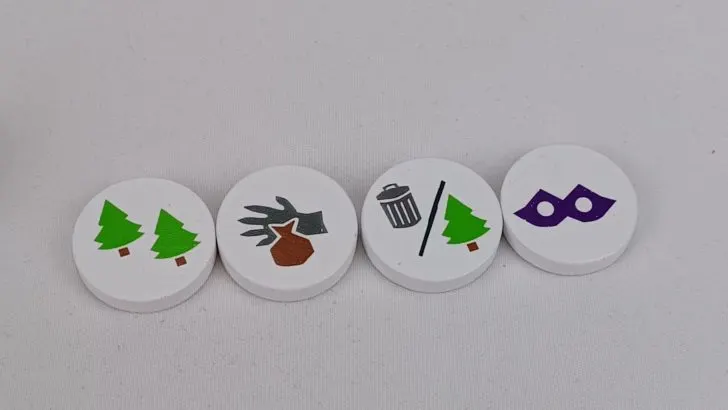
Should you roll a symbol that you have already rolled this turn, you will bust. You can avoid busting by discarding a Blammo! card or a Nanners card for their effect (see the Trash Pandas Cards section). If you bust you will not get to take any of the actions corresponding to the tokens you already collected during the round. You will return the tokens to the center of the table. When you bust you will get to take one card from the trash can and add it to your hand. Play then passes to the next player in turn order.
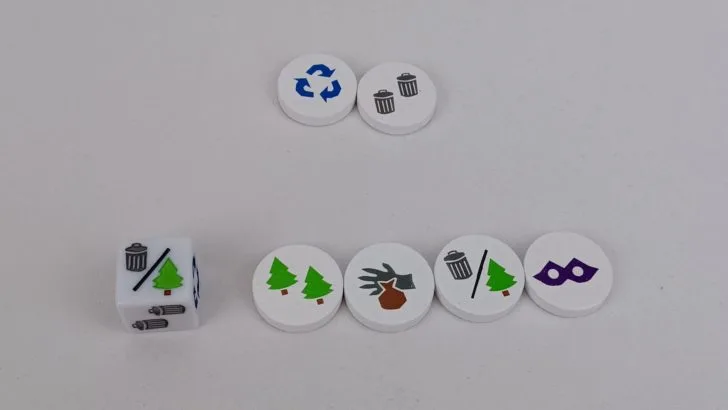
If you acquire all six tokens, you will move onto the Resolve Tokens stage. After completing the Resolve Tokens stage, you will get to take a bonus turn. Return all of the tokens to the center of the table. You will once again start rolling the die to try and collect more tokens. This turn will play the same as a normal turn except that you can only collect a maximum of three tokens. This bonus turn is considered the same turn with regards to the end game. Even if there are no cards remaining in the trash can, you will still get to take the bonus turn.
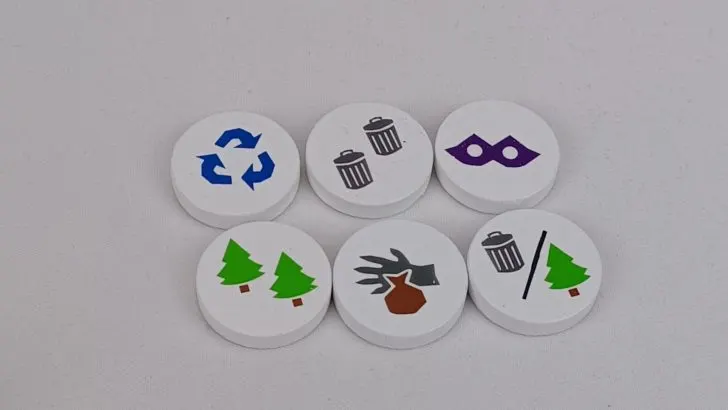
Resolve Tokens
Once you have chosen to stop rolling the die, you will have the opportunity to resolve the tokens that you acquired. If you busted when rolling the die, you will skip this step of your turn.
You can choose to resolve the tokens you acquired in any order that you prefer. See the Trash Pandas Tokens section below for details on what each token does. After you use a token’s ability, you will return it to the center of the table.
Here are some rules that you must follow when using tokens:
You may not use the ability on a card that you acquired in the current turn. You can stash a card that you just acquired though.
A card can only be stashed when you use the Tree or Bandit Mask action. You will place stashed cards face down unless you stashed it through the Bandit Mask action. If you do not stash a card, it will remain in your hand.
After you have used all of your tokens, your turns ends. You will pass the die to the player on your left (clockwise).
If you ever have to draw a card and no cards remain in the trash can, the end game is triggered. The current player finishes their turn, and the game then moves onto final scoring.
Trash Pandas Tokens
Each of the tokens in the game give you a special ability that you can use. Each token’s special ability is as follows:
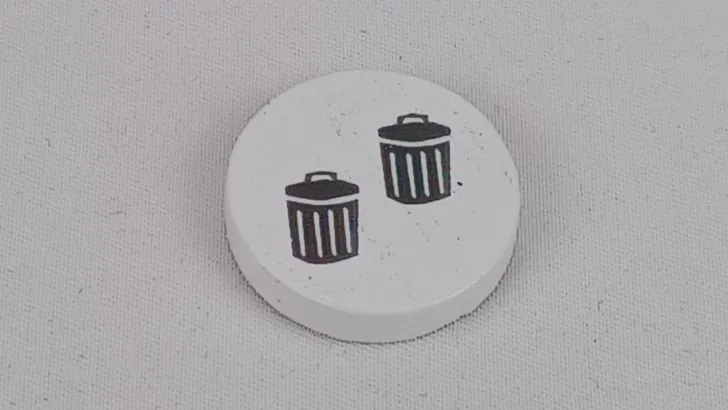
You can draw up to two cards from the trash can (the draw pile). Add the cards to your hand.
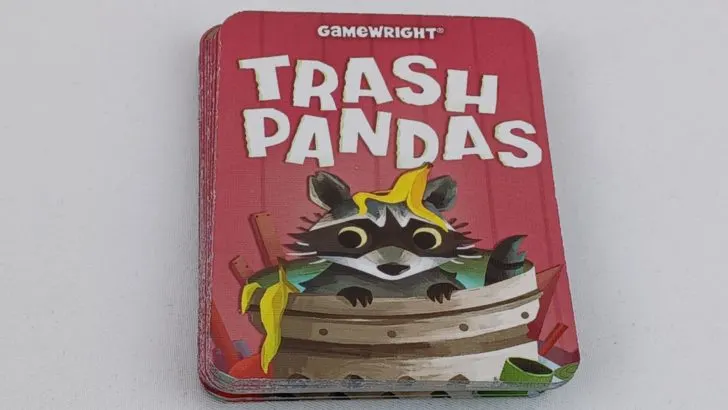
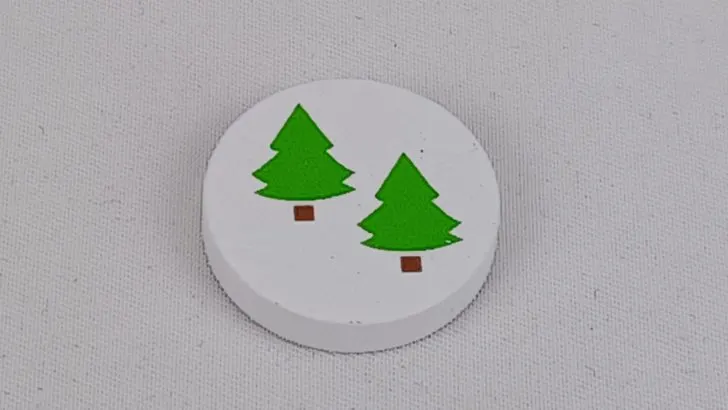
You can stash up to two cards from your hand. You will place your chosen cards face down in a pile in front of you. These cards cannot be used again until the final scoring. You may look at your own stashed cards at any time though.
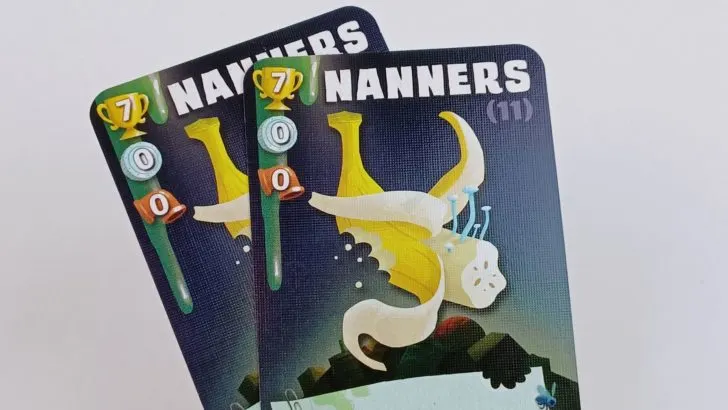
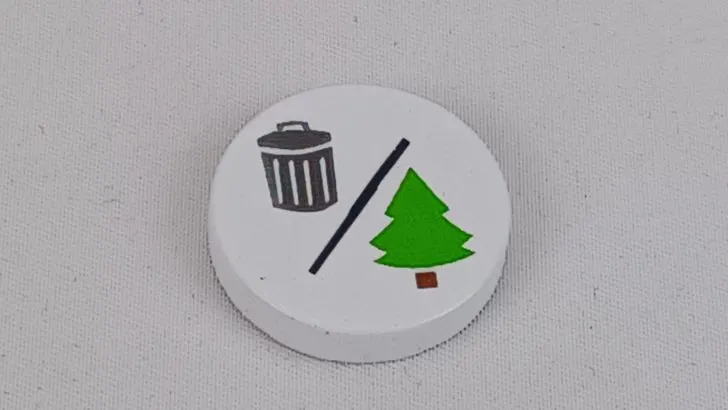
You can either draw one card from the trash can, or stash one card from your hand.
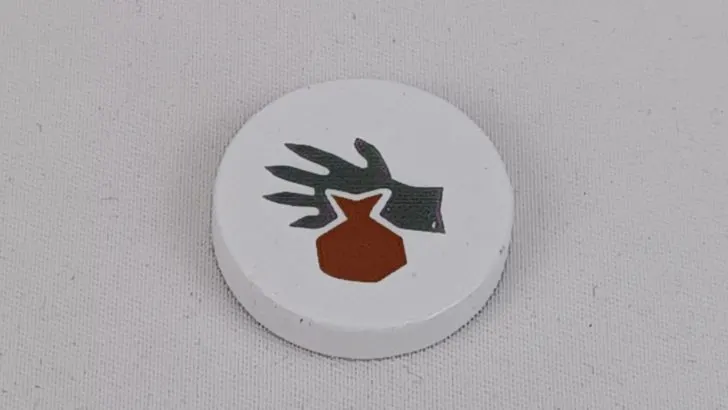
Choose one of the other players. You can steal one of the cards from the chosen player’s hand (not their stashed cards). You will randomly select one of the cards from their hand to take. The chosen player may choose to play a Doggo or Kitteh card to block your ability to steal a card.
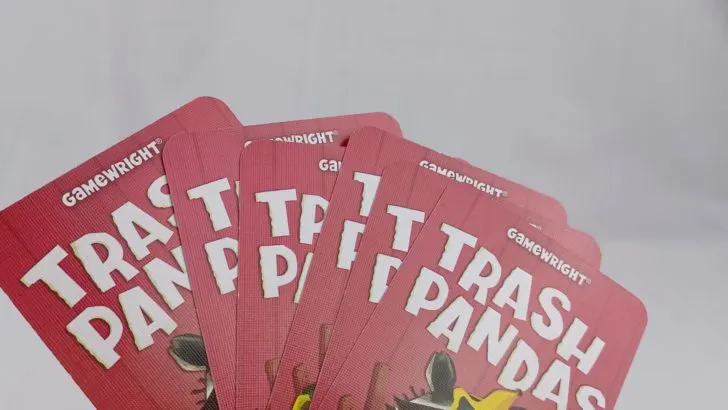
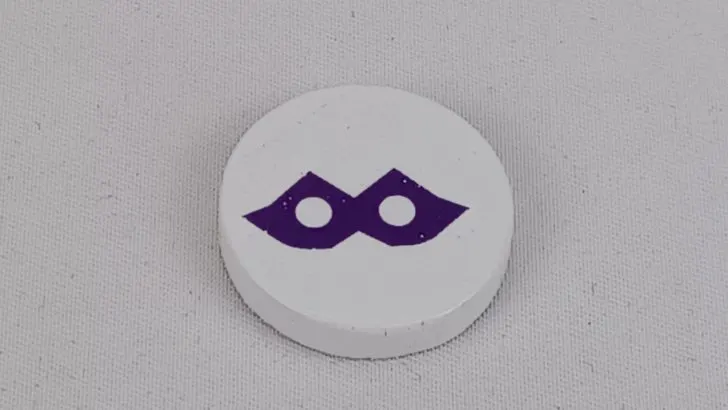
Draw the top card from the trash can and turn it over so all of the players can see it. You will add the card to your hand.
The rest of the players now have the option to stash one of the cards from their hand that matches the card that was just drawn. When players stash cards in this way though, they will be stashed face up so the other players can see them.
For each player that chose to stash a card, you will draw one card from the trash can and add it to your hand.
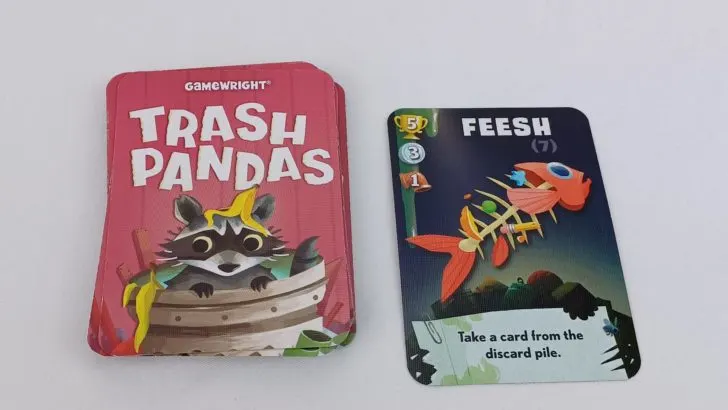
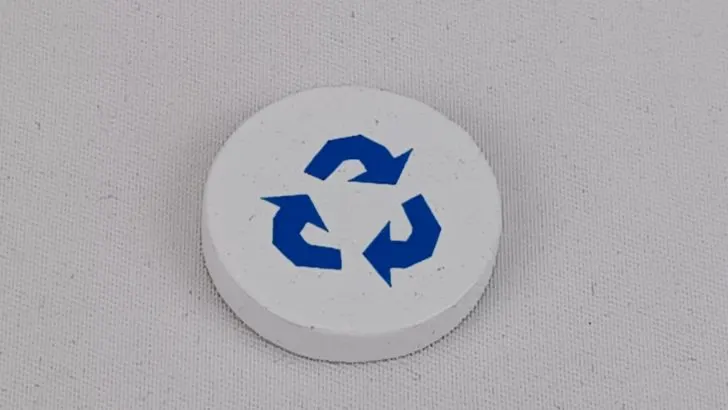
This token basically acts as a wild. You will exchange this token for any token that you have not yet taken this turn. If you collect all six tokens on your turn, this token has no special effect.
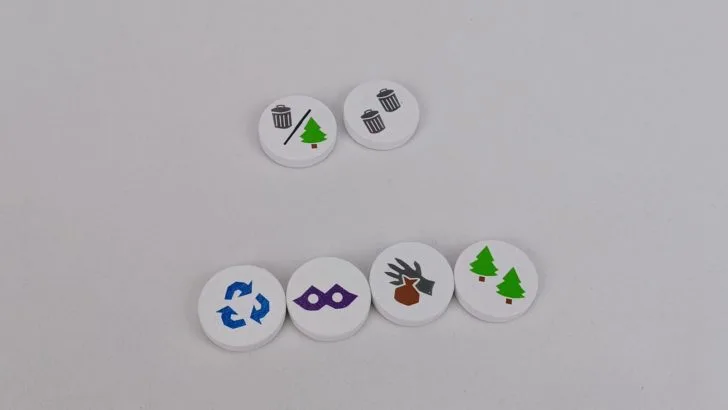
Trash Pandas Cards
In addition to stashing cards in order to score points at the end of the game, you can also play cards during the game for a special effect. After you take the card’s action, you will put the card on the top of the discard pile. The special effect of each card are as follows:
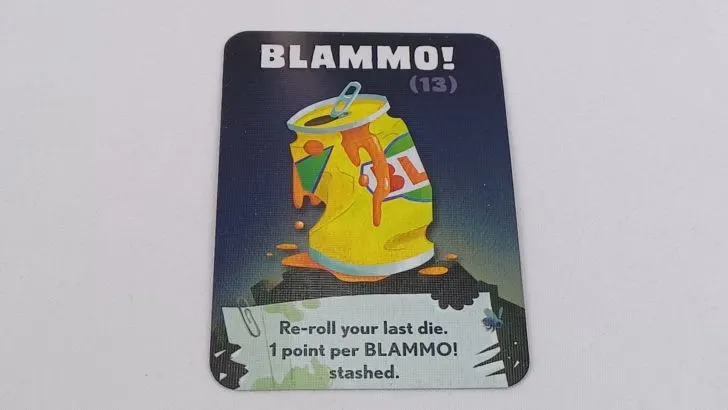
Blammo!
When rolling the die you can use a Blammo! card to ignore the result of your previous roll. You will then re-roll the die. Usually you will want to use a Blammo! card to avoid busting, but you can also choose to re-roll a symbol if you didn’t like the result.
If you stash a Blammo! card, it will be worth one point at the end of the game.
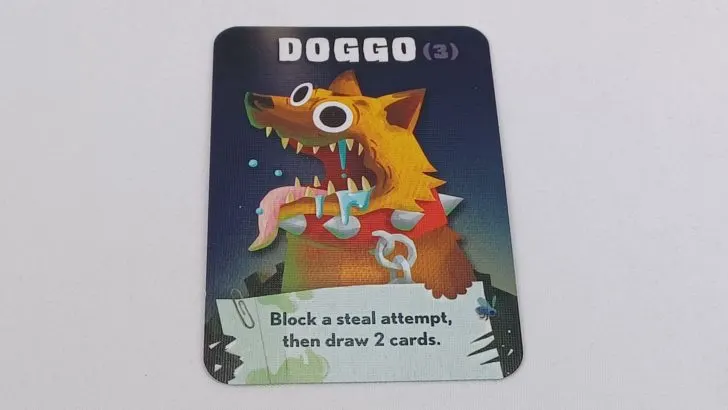
Doggo
If another player tries to steal a card from you, you can play a Doggo to prevent them from stealing from you.
Additionally you may also immediately draw two cards from the trash can. If there are less than two cards remaining, draw whatever cards remain.
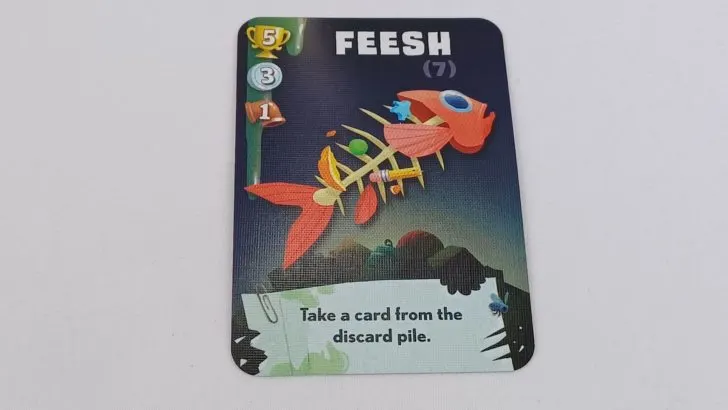
Feesh
When you play a Feesh card, you can look through the discard pile and take one card. You will add the card to your hand. The card you take from the discard pile can be used this turn. For example you can take a Blammo! or Nanners card to avoid busting.
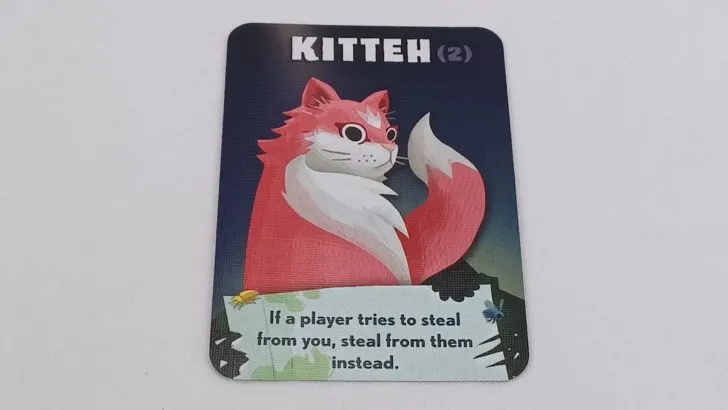
Kitteh
If another player tries to steal from you, you may play the Kitteh card to stop them. Instead of them stealing a card from you, you will get to steal a card from them.
If the player used the Steal action, you will get to randomly take one card from their hand. When the player uses a Shiny card (to steal a stashed card), the Kitteh card allows you to steal one card from their stashed cards.
If you use a Kitteh card against another player, they can use a Doggo card or another Kitteh card against you.
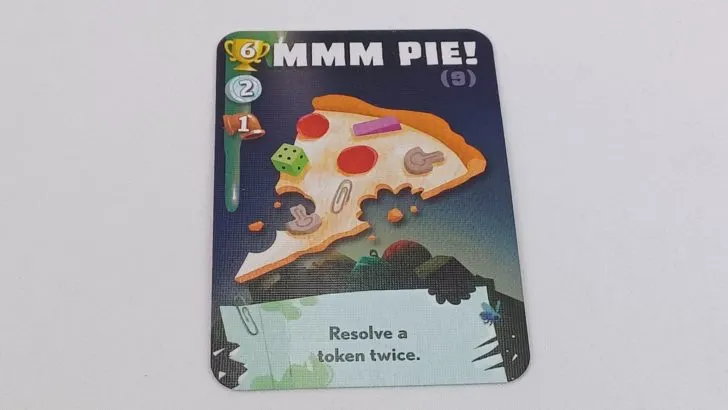
MMM Pie!
When resolving your tokens, you can use the MMM Pie! card to resolve one of your collected tokens two times. For example you can use it with the trash cans token to draw four cards instead of two.
You may not use multiple MMM Pie! cards on the same token in one turn to take the corresponding action more than two times.
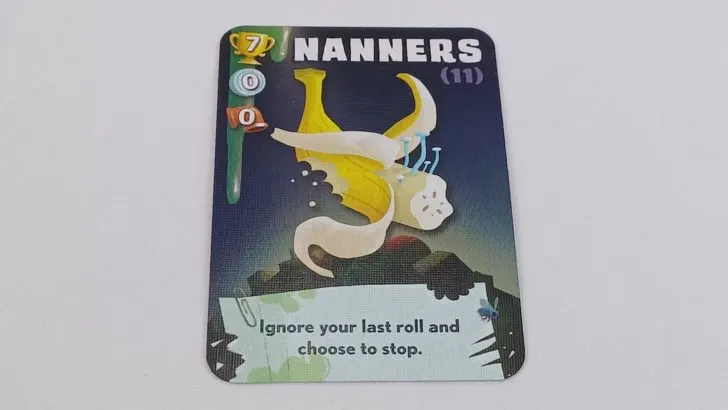
Nanners
When you are about to bust you can choose to play a Nanners card. By playing the card you will cancel your last die roll. The card acts like you decided to quit rolling and never rolled the die the last time.
After you play the Nanners card, you cannot continue rolling the die. The one exception to this is if another player plays a Yum Yum card on you forcing you to roll again.
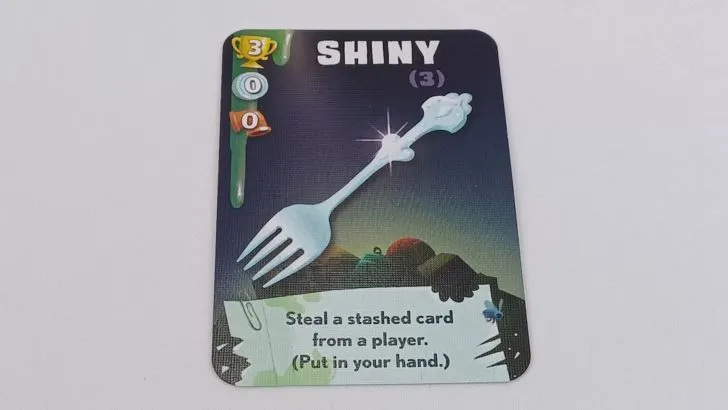
Shiny
You may play a Shiny card in order to steal a stashed card from another player. You will add the card you stole to your hand.
A Shiny card can be used to either steal a face up or face down stashed card. If you choose to steal a face down card, you cannot look at it until you have chosen to take it.
The player you choose to steal from can choose to use a Doggo or Kitteh card in order to block you. In this case you will discard the Shiny card for no effect.
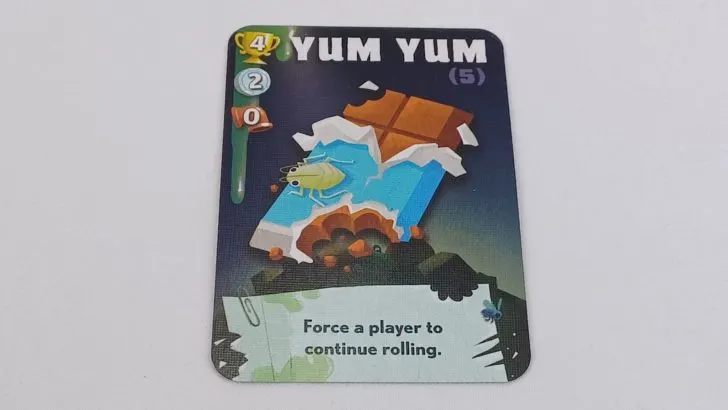
Yum Yum
You can play a Yum Yum card on another player’s turn. You can play the card on another player after they have decided to stop rolling the die. The player will then be forced to roll the die at least one more time.
If the chosen player ends up busting, they can choose to use a Blammo! or Nanners card like normal to avoid busting.
Should the player roll the die and not bust, they can either chose to stop rolling, or they can continue rolling the die.
Trash Pandas End Game and Scoring
After the last trash can card is drawn, the game will end after the current player finishes their turn.
Any cards left in the players’ hands are discarded.
Players will then reveal all of the cards they stashed during the game. You should sort your cards by their types.
The players will then compare how many cards they stashed of each type. The player that stashed the most cards of each type scores points equal to the highest number in the top left corner of the card. The player that stashed the second most cards gets the second highest number of points and so on. In order to score points you need to have stashed at least one card of the corresponding type.
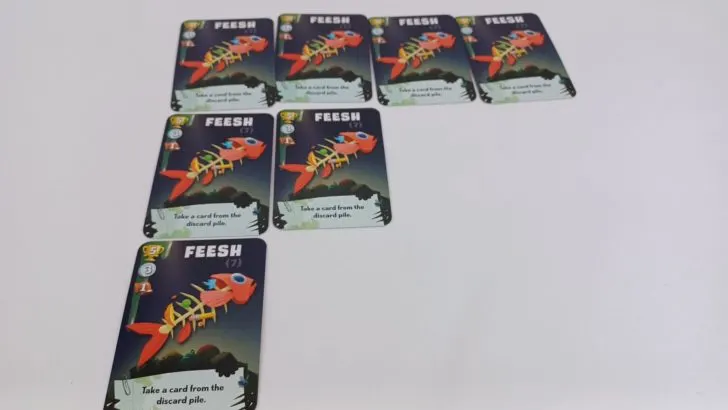
If there is a tie for one of the positions, the tied players will score one point less than what they would have scored if they were the only player to earn that place. The player with the next most cards gets points equal to the next highest position remaining.
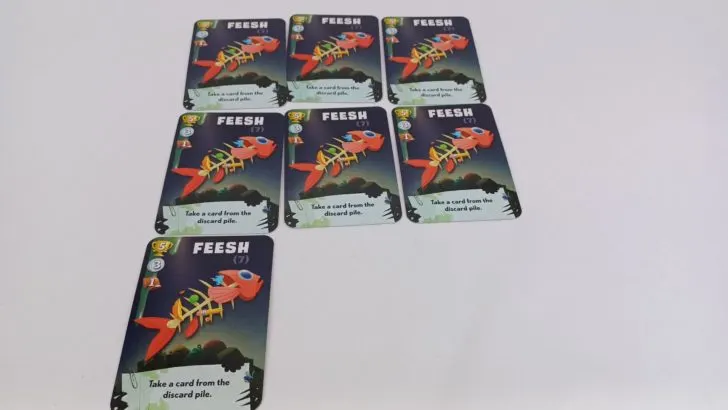
Players will also score one point for each Blammo! card that they stash.
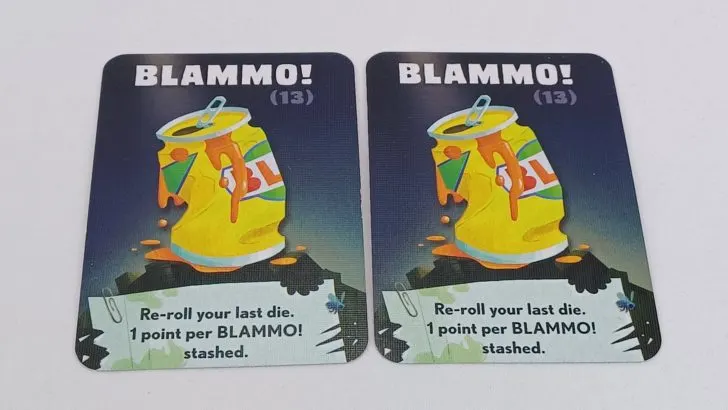
After scoring each type of card, players will compare their total scores. The player that scores the most points wins the game.
If there is a tie for most points, the tied player with the greatest variety of stashed cards wins the game. If there is still a tie, the tied player with the most stashed cards wins.
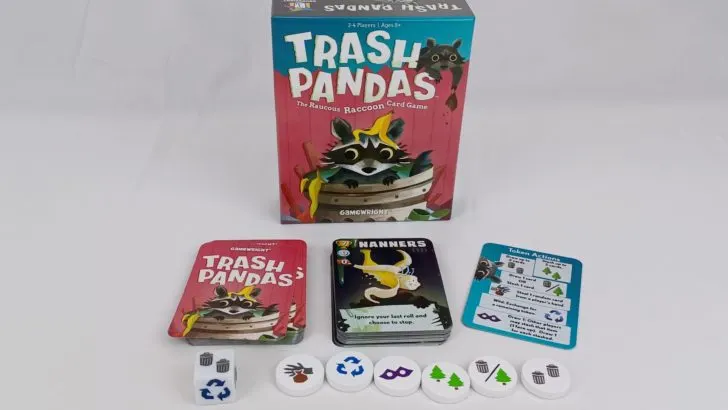
Year: 2017 | Publisher: Gamewright, Red Rook Games | Designer: Lisa Eskue, Michael Eskue | Artist: Kwanchai Moriya
Genres: Card, Dice, Family, Press Your Luck, Set Collection
Ages: 8+ | Number of Players: 2-4 | Length of Game: 15-20 minutes
Difficulty: Light | Strategy: Light-Moderate | Luck: Moderate-High
Components: 54 cards, 6 tokens, die, instructions
Where to Purchase: Amazon, eBay Any purchases made through these links (including other products) help keep Geeky Hobbies running. Thank you for your support.

